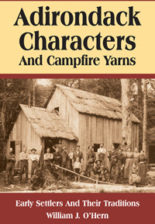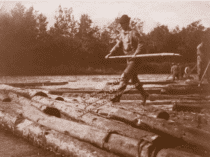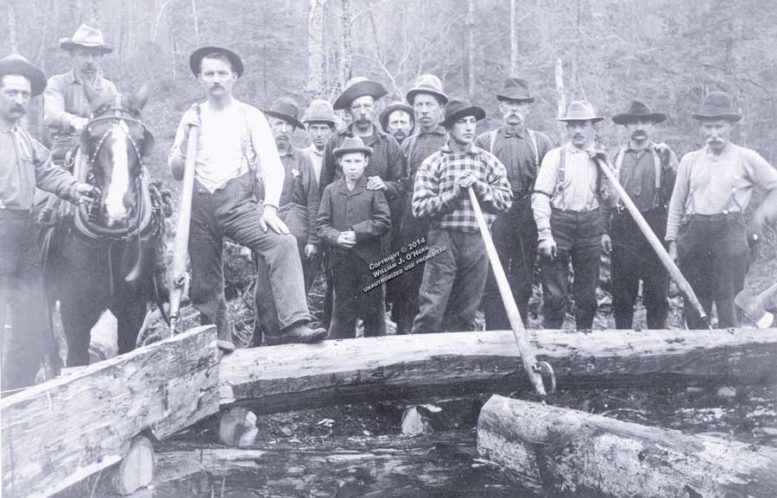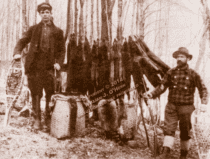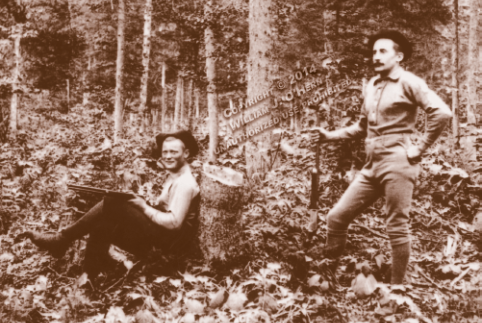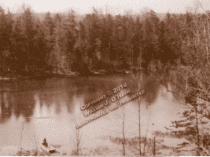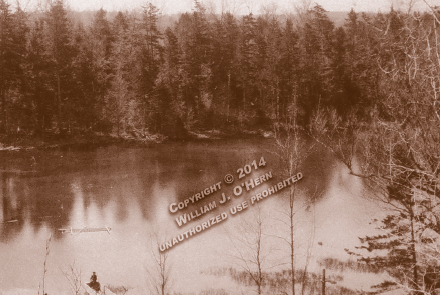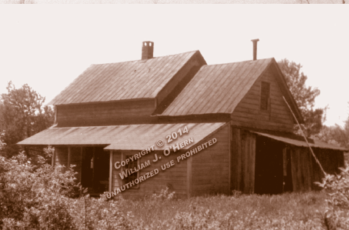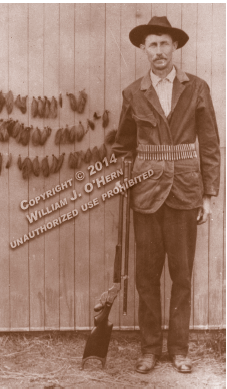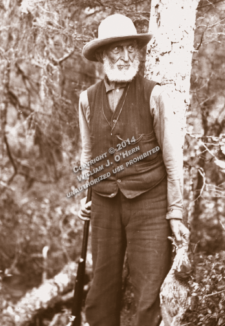Spruce Lake is one of those baptismal landscapes that offers a refreshing sight. The thought will soar a tired spirit, refresh a wearied soul.
Adirondack Characters And Campfire Yarns
Spruce Lake, Far back and long ago
An excerpt from ” Adirondack Characters And Campfire Yarns “, Starting on page 187.
I suppose anyone who likes the outdoors, consults a guidebook, and enjoys traveling throughout the great Adirondack forest shares a need for a special place: a meadow, a summit, fire tower, lake or pond, a stretch of incomparable water to paddle or fish, a favorite trail or a seldom-climbed rocky knob. The list is as endless as people are diverse. The particular place where we can eye the mountain topography, think of a little history or study the pleasing geography can stick in our mind long after we leave it. The thought will soar a tired spirit, refresh a wearied soul, and perk up a sinking feeling.
Spruce Lake is one of those baptismal landscapes that offers a refreshing sight. Located about ten miles northwest of Piseco Lake Village, it is one-and- a-quarter miles long and one half mile wide and lies 2,378 feet above sea level. Few people ever see it, although it is accessible by foot trail on the way in to the home site of French Louie, the old woodsman who once lived at Big West. Time is an asset. I make use of it as one should a nonrenewable natural resource. While rowing and later, lakeside, nestled in one of three lean-tos tucked along the tight spruce-balsam bordered lake, by a crackling fire, with the freedom time affords, I have looked at fishing pictures that were taken in this vicinity. On the path from the village of Piseco that in 1880 consisted of only three or four families, I suspect the old Indian hermit “Pezeeko,” who once dwelt upon its shores, tramped approximately the same terrain of the Great Forest I cover to reach the backwoods lake. Then, the scenery was wild and beautiful. The lake is no different now. Then, the recent explorations and extensive reports on the Topographical Survey of the Adirondack Wilderness, by Verplanck Colvin, served to attract attention in this direction. The lake was richly supplied with trout. Deer fed in the daytime around the almost impenetrable shoreline. It was also the headquarters of a well-liked spruce gum-picking Adirondack character. From his camp at the lake, Tim Crowley packed pack baskets of gum out to the Daniels factory in Poland, where it was purified and packaged for sale.
In time, a twelve-mile sled road extended Pezeeko’s footpath. The access afforded guides an avenue for their horses to pull jumpers, and city sports to traverse northwest overland from Piseco to Spruce and Balsam Lakes and more distant trout waters where the tenderfoot sportsmen could whip the streams.
There, for example, through the dense stands of spruce and balsam, the faint muddy footpath around the south shore of the lake joins with a southerly non- descript track that leads to Spruce Lake Mountain and Indian River stillwater. Farther along Spruce’s southern shoreline, another obscure trace meanders westerly in the direction of West Canada Creek’s headwaters. Illegal all- terrain vehicles have made their mark. Prefabricated bridges lie hidden in bushes to span tributaries where once the Adirondack guide who worked for three dollars a day carried a guideboat, guns and fishing tackle, his bulky pack basket and cooking utensils. He was a one-man traveling camp outfit.
The guide-of-old took pride in his knowledge of woodcraft. Without a murmur he would have made the rough “carry” for miles with a boat on his shoulder and, on reaching a favored location, would quickly set up a camp, and gather firewood for cooking and balsam boughs for a bed. He would cook, wash the pots and pans and perform whatever else was necessary to make a party of tenderfoot sportsmen comfortable and happy. Back of the outside world beyond the edges of the North Woods, the guide’s mind filled with woods lore, he told of his unsophisticated adventures. The Adirondack guide was a valuable companion in the solitude of the deep woods. There is something marvelous about traveling throughout Spruce Lake country. Its past and geography bring on creative ideas. The creative ideas, in turn, affect emotions of my heart and allow me to dream of past times.
I think of Speculator’s Dan Page and forest ranger Jim “Pants” Lawrence. Jim and the West Canadas are synonymous. At age 63, Jim constructed the log bridge across Mud Lake inlet. His way of life and his eccentricities became symbols of Big West, his interior ranger cabin home.
Both men were oldsters but popular personalities in the territory during the middle of the twentieth century. Their knowledge of the land and firsthand stories of backwoods dwellers Johnny Leaf and Adirondack French Louie (Louie Seymour) became legend. Louie had put in a good evening the night of February 27, 1915, at the bar of the Brooks Hotel in Speculator, drinking with Pants Lawrence. The next day Louie died.
I didn’t know French Louie but I knew Winfred “Slim” Murdock. Slim, late in life, shared his time with me looking back on his years as a packer for his uncle Gerald Kenwell. Gerald’s parents were Adirondack pioneers. On the bank of the South Branch of the Moose River in the Moose River Plains, his parents lived in the 1890s. Their nearest neighbors resided eighteen miles away!
It was while living in the Plains that Lewie, as Gerald spelled his name, came to know the Kenwells. Louie taught Gerald (who was only a young boy) how to care for himself in the woods under all kinds of circumstances. Slim said his uncle told him the woodscraft learned from Louie became “mighty useful in later years.” Once grown, Gerald built a fishing and hunting camp along Otter Brook. Slim began packing for Gerald about 1920.
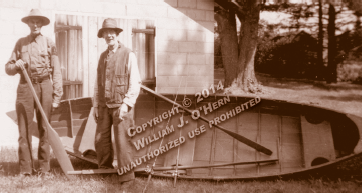
Retired Forest Ranger Jim “Pants” Lawrence, and woodsman Dan Page beside an Adirondack guideboat.
COURTESY EDWARD BLANKMAN (THE LLOYD BLANKMAN COLLECTION)


